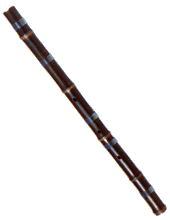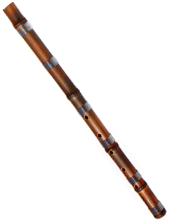
mendoza hotel
hoteles mendoza
mendoza argentina
mendoza turismo
tour mendoza
flauta flute
flautas flutes
quena kena
siku zampoña
shakuchachi
flute headjoint
flutes baroque
world flutes
flute world
mendoza viajes
transporte mendoza
argentina hoteleria
excursión mendoza
aconcagua
bodegas mendocinas
bodega
malbec
vino mendoza
fista vendimiaMendoza (5507)
Argentina
caminos del vino
puente del inca
Mendoza (5507)
Argentina
mendoza hotel
hoteles mendoza
mendoza argentina
mendoza turismo
tour mendoza
flauta flute
flautas flutes
quena kena
siku zampoña
shakuchachi
flute headjoint
flutes baroque
world flutes
flute world
mendoza viajes
transporte mendoza
argentina hoteleria
excursión mendoza
aconcagua
bodegas mendocinas
bodega
malbec
vino mendoza
fista vendimia
caminos del vino
puente del inca
hoteles mendoza
mendoza argentina
mendoza turismo
tour mendoza
flauta flute
flautas flutes
quena kena
siku zampoña
shakuchachi
flute headjoint
flutes baroque
world flutes
flute world
mendoza viajes
transporte mendoza
argentina hoteleria
excursión mendoza
aconcagua
bodegas mendocinas
bodega
malbec
vino mendoza
fista vendimiaMendoza (5507)
Argentina
caminos del vino
puente del inca
Mendoza (5507)
Argentina
mendoza hotel
hoteles mendoza
mendoza argentina
mendoza turismo
tour mendoza
flauta flute
flautas flutes
quena kena
siku zampoña
shakuchachi
flute headjoint
flutes baroque
world flutes
flute world
mendoza viajes
transporte mendoza
argentina hoteleria
excursión mendoza
aconcagua
bodegas mendocinas
bodega
malbec
vino mendoza
fista vendimia
caminos del vino
puente del inca
World Flutes Festival
Love Silence
Peace
Amuki
Compassion
Peace
Amuki
Compassion

Cuidemos el medio ambiente
Flute flutes native american flute flauta quena shakuhachi bansuri flute world flauta flute flute flauta flutes miyazawa sankyo flute pear flutes muramatsu flute drelinger head joint world music festival
FUNDACIÓN
AMA AL MUNDO
AMA AL MUNDO

NUEVO !! YOGA FLUTE MEDITATIONS
Yak
Yak is similar to jeok in shape, and since the player uses three holes to make 12 tunes, the playing technique is difficult. Yak is used as a kind of dancing tool in royal court memorial service music and sacrificial rites. It is used partly in performance of Munmyo-cheryeak, but when it is played for dance purposes, dancers use this instrument as a set for their dancing, holding it with their left-hand. It has only three holes, so that this makes the instrument difficult to produce 'sibiyul' such techniques as adjusting holes with fingers to a half or a quarter. It is said that the yak was used In ancient time, for instance, the Chou dynasty in China already had it. A reed was made at that time, bur in modern time it is made of bamboo. It would be appropriate to consider the yak as a means for dancers rather than musical instrument.
Yak is similar to jeok in shape, and since the player uses three holes to make 12 tunes, the playing technique is difficult. Yak is used as a kind of dancing tool in royal court memorial service music and sacrificial rites. It is used partly in performance of Munmyo-cheryeak, but when it is played for dance purposes, dancers use this instrument as a set for their dancing, holding it with their left-hand. It has only three holes, so that this makes the instrument difficult to produce 'sibiyul' such techniques as adjusting holes with fingers to a half or a quarter. It is said that the yak was used In ancient time, for instance, the Chou dynasty in China already had it. A reed was made at that time, bur in modern time it is made of bamboo. It would be appropriate to consider the yak as a means for dancers rather than musical instrument.

Jeok
Jeok has one finger hole in the back, five on the front, and two empty holes at the end in the back. At the center of the last joint at the bottom of the bamboo pipe, it used to have a cross hole like ji, but the hole is not carved today. The jeok was introduced into the Koryo dynasty and Currently is Using in Munmyo-cheryeak.
Jeok has one finger hole in the back, five on the front, and two empty holes at the end in the back. At the center of the last joint at the bottom of the bamboo pipe, it used to have a cross hole like ji, but the hole is not carved today. The jeok was introduced into the Koryo dynasty and Currently is Using in Munmyo-cheryeak.



